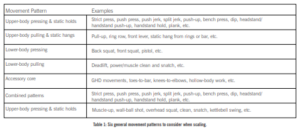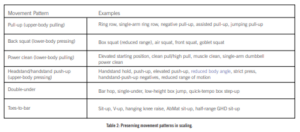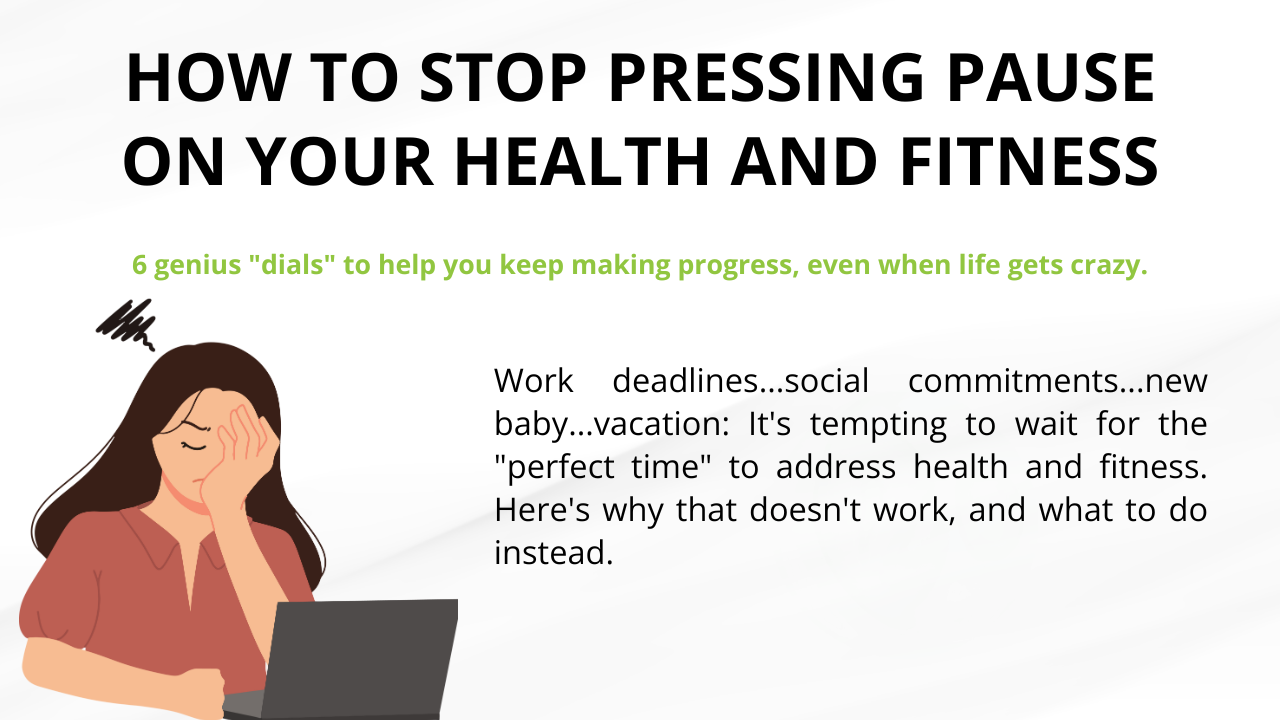2. General Movement Patterns
When scaling a workout, strive to preserve the programmed movement patterns. CrossFit programming theory broadly categorizes movements into three modalities: weightlifting, gymnastics and monostructural metabolic conditioning (i.e., “monostructural”). To help coaches preserve the intended stimuli when scaling, let’s divide these movement modalities into six general movement patterns in Table 1.
We preserve movement patterns based on the “compound yet irreducible” property of functional movements. For example, if we want to improve our squatting position and mechanics, then we must squat. Targeted mobility can improve our positions, but if we never squat (even at a reduced range of motion), then we can’t fully develop our squat.
This extends beyond CrossFit’s nine foundational functional movements. If we avoid upper-body pressing motions involving shoulder extension (dips, push-ups, etc.), then we can’t fully develop those movements, nor can we develop the joint stability and motor control required of those movements at heavy loads or volume. In daily application, this means completely avoiding a movement or its scaled variants. If a newer athlete skips ring dips (to include progressions such as push-ups) every time they are programmed, it’s unlikely that athlete will ever fully develop safe dips.
Try to preserve the programmed plane of motion, too (usually sagittal or frontal/coronal), but this is a secondary consideration.
Table 2 shows some examples of movements and corresponding scaled movements that preserve similar patterns (not necessarily planes of motion).
Skill progressions go hand in hand with scaling to preserve movement patterns. Having a list of “go-to” progressions gives you immediate scaling options. The CrossFit Hampton Roads website contains a sample pull-up progression that outlines scaling options for workouts with pull-ups.
Having a list like this also expedites scaling for injured athletes. At our affiliate, we begin every class by asking athletes if there are any injuries or illnesses. With that information, the coach uses pre-built progressions to develop scaling plans for the workout. There are times, however, when preserving every movement pattern in a workout is not always possible. This often occurs when working with injuries or permanent disabilities. Remember that movement patterns are one of many possible stimuli. We can still provide quality training without preserving every pattern in every session.


About the Author
Jeremy Gordon, CCFC, was the head coach and CEO of CrossFit Hampton Roads from 2008 to 2015. He began CrossFit in 2005. Jeremy coaches at CrossFit Hampton Roads and provides online coaching for competitive-level CrossFit athletes. He is the proud husband of Nicole Gordon (CrossFit Seminar Staff) and parent of two phenomenal kids. He is a 17-year veteran fighter pilot flying with the Virginia Air National Guard.
Reference: CrossFitJOURNAL





